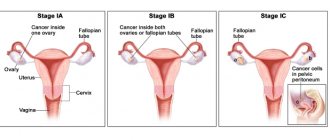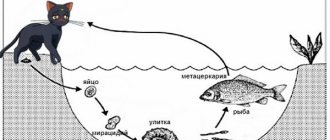The kidneys are an important part of the urinary system. Through them, filtration and removal of metabolic products and toxic substances from the body is carried out. When kidney disease occurs, the organ does not work properly and toxins accumulate, causing various pathologies.
Chronic kidney disease can lead to kidney failure, which is life-threatening. It affects about 11 women and six men out of 100, and the likelihood of developing CKD increases as you age. The risk group includes diabetics, hypertensive patients, and patients with a family history of kidney disease.
Jade: what kind of disease and its types
In medicine, all inflammatory processes that occur in the kidneys and cover the organ completely or occur in separate foci are called nephritis. It can be unilateral (covers one kidney) or bilateral.
Depending on the location of inflammation and its spread, several types of diseases are distinguished:
- Pyelonephritis is the most common diagnosis. It is observed more in young women. The cause is infectious pathogens. Most often these are bacteria and viruses. The pathological process covers the calyces, pelvis and parenchyma of the organ.
- Glomerulonephritis is rarely diagnosed. This condition is dangerous with complications, as inflammation spreads quickly. Mainly the glomeruli are affected, sometimes the tubules. May cause kidney failure. It is observed more often in boys under the age of 10 years.
- The interstitial form is a dangerous variety. Inflammation occurs in the intermediate tissue of the organ and also affects the tubules. Kidney function deteriorates significantly. At the initial stage, it is easily treatable; in advanced cases, coma and death are possible.
- Radiation - the cause is the negative impact of ionizing radiation. The first symptoms appear only after 2-3 months. Rare form.
- Shunt - occurs against the background of other systemic diseases. This could be rheumatoid arthritis, lupus erythematosus or autoimmune pathologies.
According to the clinical course of the disease, acute kidney inflammation and chronic inflammation are distinguished.
If pathology occurs against the background of general health, then it is primary. In 80% of cases of all nephritis, the person has never encountered kidney disease before. Secondary organ damage occurs due to inflammation already existing in the body in other nearby organs.
Stages of CKD
- GFR (glomerular filtration rate) shows normal kidney function (>90), signs of nephropathy are observed.
- GFR 60-89 – moderate decrease in function against the background of identified kidney disease.
- GFR 45–59 (3A), 30–44 (3B) – a clear decrease in renal function with or without identified pathology. For example, older patients may experience decreased function without association with a specific disease.
- GFR 15–29 severe decline in kidney function.
- An GFR of less than 15 is called end-stage renal disease.
Manifestations of the disease
The onset of the disease is often acute. The following symptoms are typical for this period:
- girdling pain in the lumbar region;
- change in urine color;
- general fatigue and malaise;
- rare urge to urinate;
- hypertension;
- swelling of the face and body;
- rare urge to urinate.
As the condition worsens, you may experience thirst, dry mouth, and pain when urinating. If inflammation of the right kidney occurs, pain will be felt on the right side, just below the lower back.
If during this period you do not consult a specialist and begin treatment, the disease becomes chronic. It is characterized by periods of exacerbations and remissions. Symptoms are less pronounced; during the period of return of the disease, the manifestations are similar to the acute form.
The long course of the disease leads to the fact that the kidney decreases in size. It cannot work at full strength, which leads to intoxication. A common complication is uremia. This is a serious condition in which, due to kidney failure, waste and toxins accumulate in the body.
Frequent exacerbations have a negative impact on the state of the cardiovascular system. In women, the symptoms of kidney disease can often resemble gynecological diseases. It is important to undergo a thorough examination to identify the true cause of the ailment.
In kidney disease, inflammation often occurs in a latent form. Especially in children. If a child becomes afraid to go to the toilet, spontaneous urination begins to occur, or strange impurities appear in the urine, a consultation with a pediatric urologist is required.
Symptoms of chronic kidney disease
In the early stages, no symptoms are observed and pathology is detected during the next examination based on blood and urine tests. If CKD is not treated, kidney function continues to decline, which is manifested by characteristic symptoms.
May be noted:
- poor appetite, weight loss;
- nausea, vomiting;
- swelling of the legs, especially the ankles;
- feeling tired, weak;
- restless legs syndrome, muscle cramps;
- skin itching;
- dyspnea;
- bruising on the skin;
- blood, protein in urine;
- increased urination;
- insomnia;
- high blood pressure;
- erectile disfunction.
Causes of kidney inflammation
The inflammatory process is caused by pathogenic microorganisms. Most often, enterococcus, staphylococcus, and intestinal bacteria. In 15-20% there is a mixed infection.
The pathogen can enter the kidney through the urinary tract, blood or lymphogenous route. Activation of the pathological process is triggered due to general hypothermia or an infectious disease. Especially if a person suffered an illness on his legs.
People at risk for kidney disease include people who have:
- Congenital or acquired (as a result of injury) narrowing of the urinary tract.
- Diabetes mellitus, metabolic disorders.
- Surgical interventions or studies related to penetration of the urinary canals were performed. This is the installation of a catheter, the introduction of diagnostic instruments.
Long-term use of certain medications that act to suppress the immune system also increases the risk. For example, during organ transplantation. Most often, kidney disease affects women. This is due to the structural features of the female urinary system.
The causes of secondary kidney damage are:
- infectious and inflammatory process in other organs;
- alcohol abuse;
- poisoning from industrial or household chemicals; addiction;
- strong dose of radiation;
- tuberculosis.
Appointment with a doctor: diagnosis and treatment
If symptoms occur, you should contact a urologist. The doctor will prescribe an examination, which includes:
- CT scan of the pelvic organs. If necessary, it is carried out with contrast.
- Ultrasound examination of the kidneys.
- General analysis of urine and blood.
- Urine culture tank, which is aimed at determining the type of pathogen.
To clarify the pathology, the woman is recommended to undergo an examination by a gynecologist to rule out inflammation of the pelvic organs.
Conservative therapy
The acute form or exacerbation of chronic inflammation requires hospitalization. It is imperative to provide the patient with bed rest and dry heat in the lumbar region. Only in a horizontal position does the blood supply to the kidney vessels improve, which contributes to a speedy recovery. Physical activity in the acute period is strictly contraindicated.
The doctor prescribes painkillers, antispasmodics, diuretics and antibiotics (if necessary). It is important to follow a salt-free diet. You should also temporarily exclude animal protein from your diet.
The water regime is set by the doctor, based on the form and course of the disease.
Surgical methods
If treatment with medications does not lead to an improvement in the patient’s condition, as well as in cases of severe disorders of the urinary system, nephrectomy is advisable. This is an operation during which part or all of the affected kidney is removed. This method is the only effective treatment when malignant tumors are detected on an organ or if there is a risk of developing an abscess or sepsis.
After surgery, the patient is prescribed maintenance antibiotic therapy.
In especially severe cases, lifelong hemodialysis and subsequent organ transplantation are required.
Pyelonephritis: causes, symptoms, diagnosis and treatment
Table of contents
- Causes of the disease
- Symptoms of the disease
- Classification of the disease
- Who is susceptible to the disease?
- Diagnosis of the disease
- Treatment methods
- Features of therapy in adults
- Pyelonephritis in children
- Possible complications
- Advantages of contacting MEDSI
Pyelonephritis is an inflammation of the urinary system.
The pathology occurs in acute or chronic form. The main danger of the disease is that it may not have pronounced clinical manifestations. In addition, the pathology is often misdiagnosed, mistaking it for cystitis, radiculitis, or even a common cold. In this case, the disease takes a chronic form and is difficult to treat. If left untreated or not treated correctly, it can cause kidney failure and even sepsis. Let's consider the main symptoms of acute and chronic pyelonephritis, understand its causes and other features in women and men. We will also determine how the disease progresses in children. Let us also consider the features of pathology therapy.
Causes of the disease
In most cases, the disease is caused by a bacterium that multiplies in the intestines.
Pyelonephritis is caused by bacteria.
They enter the urinary system through the urethra. After this, they spread into the bladder. Subsequently, the pathogen ends up in the kidneys. In most cases, the disease is caused by a bacterium that multiplies in the intestines. This explains the high frequency of pathology in women. The disease occurs more often in them due to the peculiarities of the anatomy - the proximity of the anus and urethra.
The likelihood of development increases the abnormal outflow of urine. It is not surprising that pyelonephritis is often diagnosed in patients with urolithiasis.
Also unfavorable factors include:
- Diabetes
- Previous acute cystitis
- Frequent hypothermia
- Chronic inflammation
- Immune disorders
Symptoms of the disease
Acute pyelonephritis
This pathology is characterized by a sudden onset. It is usually accompanied by a sharp increase in body temperature to high levels (39–40 degrees). The patient suffers from loss of appetite, severe sweating, weakness, and headache. He often experiences nausea and vomiting. Acute pyelonephritis is also characterized by symptoms such as dull pain in the lumbar area. They are usually one-sided. In the absence of complications, urination problems do not occur, but the urine becomes cloudy and may acquire a reddish tint.
Chronic pyelonephritis
Often, pathology develops in the absence of symptoms of an untreated acute form. In some cases, it is discovered by chance during a standard medical examination.
The main symptoms of chronic pyelonephritis in men and women include:
- Decreased appetite
- Weakness
- Frequent urination
- Aching pain in the lumbar region
- Headache
Classification of the disease
There are acute and chronic pathologies. Both are characterized by several stages.
Acute pyelonephritis develops from serous to purulent inflammation, apostematous form, kidney carbuncle and abscess. Chronic – from active to latent inflammation and to remission.
Who is susceptible to the disease?
Pyelonephritis can develop in a person regardless of age. It is usually diagnosed in:
- Children under 7 years old. The risk of developing pathology increases in the presence of anatomical disorders
- Women 18–30 years old. The disease can be triggered by the onset of sexual activity, the process of bearing a child and subsequent childbirth.
- Older men. In them, pyelonephritis is often a consequence of prostate adenoma and urinary tract pathology
Diagnosis of the disease
To isolate the microflora that provoked inflammation, special test kits are used.
Laboratory
The diagnosis can be confirmed through a general urine test. Usually bacteria and a small amount of protein are found in it. To determine the causative agent of the pathological process, bacteriological culture is performed. The acute stage is indicated by high white blood cell counts and an increase in the erythrocyte sedimentation rate. To isolate the microflora that provoked inflammation, special test kits are used. A Zimnitsky test can also be performed. It involves collecting urine separately in 8 containers throughout the day. This study allows us to identify the concentration ability of the kidneys, which is important in the diagnostic process.
Radial
The patient may be prescribed:
- Survey urography. The method allows you to determine the volume of the kidney
- Excretory urography. The technique makes it possible to determine the limited mobility of the kidney
- Ultrasound. This study allows us to identify structural changes in tissues
- CT. This technique is aimed at identifying anatomical abnormalities of the kidneys and confirming or excluding urolithiasis
Treatment methods
Treatment of the disease is always carried out comprehensively and individually. Treatment is determined by a number of factors. These include both the individual characteristics of the patient and the form and stage of development of the pathology.
Treatment of the disease is always carried out comprehensively and individually.
Conservative therapy
This treatment of pyelonephritis includes medications and physiotherapeutic methods. To eliminate inflammation in the acute stage as quickly as possible, antibacterial drugs are prescribed. The main principle of therapy is frequent changes of agents. This is due to the fact that bacteria quickly lose susceptibility to a particular antibiotic. Additionally, the urologist may recommend immunostimulants, multivitamins and other medications.
Treatment of chronic kidney pyelonephritis is more difficult and lengthy. It is important for the doctor to eliminate the causes that impede the outflow of urine or blood circulation in the organ. Therapy is also aimed at increasing general immunity. Its goal is sustainable remission.
Surgery
It is carried out if conservative methods did not give the desired result or were initially inappropriate. Typically, operations are performed for an abscess or purulent process. The intervention technique is selected by the doctor in accordance with the cause of the pathology.
Treatment of pyelonephritis in men may require removal of prostate adenoma, for example. Surgeries to remove kidneys, plastic surgery of the urethra, and remove stones are also performed.
Features of therapy in adults
Pyelonephritis in men
Antibiotics are prescribed to prevent the spread of infection. Antispasmodics may also be prescribed. If necessary, bladder catheterization is performed. After the patient has recovered from the acute stage, he is prescribed diuretics, antioxidants and vitamins. A special diet is also prescribed.
Pyelonephritis in women
Therapy is aimed at eliminating inflammation and ensuring normal urine flow. Treatment is carried out using mainly antibiotics and uroseptics. Patients are also prescribed a diet high in fermented milk products and light carbohydrates.
Pyelonephritis in children
The prevalence of the disease occurs in young patients immediately after acute respiratory viral infection. Moreover, ARVI is often the initial cause of the development of pathology. More often, acute disease occurs in girls. This is due to the peculiarities of the anatomy (the structure of the urethra, which is shorter and wider than in boys). In most cases, the acute form ends in complete recovery. The disease is dangerous for children who are weakened and have concomitant pathologies. Chronic pathology leads to deterioration of the condition.
Medicines are used to treat pyelonephritis in children
. Antihistamines, non-steroidal anti-inflammatory drugs and antioxidants are recommended for children. The duration of treatment for the disease in the acute stage is from 1 to 3 months.
Particular attention is paid to proper nutrition and drinking regime. In the acute phase, the child can be recommended a plant-protein diet and bed rest.
. Antibiotics and uroantiseptics are also prescribed. To increase blood flow in the kidneys, treatment is carried out using fast-acting diuretics.
Outside periods of exacerbation, patients are prescribed maintenance treatment
antiseptic and diuretic preparations, physical therapy and massage. It will be useful to visit sanatoriums and take course programs in them aimed at generally strengthening the immune system.
Possible complications
If, during the acute stage, complete recovery does not occur within three months, the disease develops into a chronic form, and in advanced cases it can cause the following complications:
- Kidney failure
- Paranephritis
- Kidney carbuncle
- Sepsis
Pyelonephritis, which has not been treated, enters the terminal stage: the diseased kidney is completely filled with pus and tissue decay products, and pyonephrosis occurs. In this case, the kidney will need to be removed.
Important! If the surgical intervention is performed correctly and the patient complies with all the doctor’s instructions, the prognosis is favorable.
Advantages of contacting MEDSI
- Modern expert class equipment.
It allows you to quickly identify pathology, preventing it from becoming chronic - Multidisciplinary approach.
Thanks to him, high-quality and fast treatment is provided. Together with urologists, gynecologists, andrologists, neurologists, endocrinologists, gastroenterologists and other specialized specialists work with the patient’s problems. - Treatment according to the latest recommendations (including international ones).
Such therapy is always as effective as possible and at the same time safe. - Minimally invasive techniques.
Thanks to them, the risks of complications are reduced and the rehabilitation period is shortened.
Thanks to a multidisciplinary approach, high-quality and fast treatment is ensured.
To clarify the conditions for the treatment of pyelonephritis in men, women and children or to make an appointment, just call +7 (495) 7-800-500. Our specialist will answer all questions. Recording is also possible through the SmartMed application.
Call now
(495) 7 800 500
Leave a request
You will receive an automatic call back, wait for the operator to respond.
Policy regarding the processing of personal data Consent to the processing of personal data
Make an appointment
Our doctors
Ovchinnikova Anna Leonidovna
General practitioner, nephrologist
MEDSI Clinic on Leningradsky Prospekt MEDSI Clinic on Khoroshevsky Proezd
Telyatnikov Nikita Alexandrovich
Pediatrician, nephrologist
Clinical Diagnostic Center MEDSI on Krasnaya Presnya Children's Department of the Clinical Diagnostic Center MEDSI on Krasnaya Presnya
Kelaskina Polina Nikolaevna
Nephrologist
Department of Pediatrics at the MEDSI Clinic in Khoroshevsky Proezd MEDSI Clinic in Khoroshevsky Proezd
Rodin Alexander Evgenievich
Nephrologist
Associate Professor, Candidate of Medical Sciences
Clinical diagnostic center MEDSI on Belorusskaya
Show all doctors
show more
Folk remedies
During remission, you can maintain kidney health with herbal remedies. This will help consolidate the effect of the treatment. But the choice should definitely be made together with your doctor.
For different forms of jade, the following herbs are recommended:
- birch buds;
- sage and bearberry leaves;
- chamomile;
- corn silk;
- horsetail;
- lingonberry leaves;
- juniper.
Herbal medicine will not replace drug treatment, and will not help with advanced disease. It can only be used in combination with therapy prescribed by a urologist.
How to treat cold kidneys. Treatment with traditional medicine
Don't know what to do? First of all, if a person has a cold in the kidneys, then they need to be treated. And as soon as possible, since the advanced course of the disease can serve as a starting point for the development of even more serious pathologies. The doctor decides how to treat cold kidneys. Based on the prevailing symptoms, he prescribes intensive complex therapy and diet. Treatment will most likely include:
- Antibiotics, sulfonamide drugs;
- Diuretic tablets;
- Antimicrobial and anti-inflammatory agents;
- Antispasmodics and analgesics to relieve pain;
- Antipyretics (if antibiotic therapy is not carried out);
- Herbal preparations (Urolesan, Canephron, Phytolysin, Cyston);
- Hormonal drugs if other methods of therapy are unsuccessful;
- Droppers with detoxification solutions to cleanse the blood;
- External medications (warming ointments, warm baths);
- Supporting vitamin complexes and bioactive supplements.
Disease prevention
To maintain kidney health and prevent the possibility of inflammation developing in them, it is recommended to adhere to the following recommendations:
- Treat infections of the genital and urinary organs in a timely manner.
- Do not abuse alcohol, especially beer drinks.
- Limit salt intake.
- Don't ignore lower back pain.
- Avoid hypothermia.
- If you have an acute respiratory viral infection, stay in bed.
- Undergo annual preventive examinations.
If there are already problems with the kidneys, then spices and hot seasonings are excluded from the diet. Maintain proper drinking regime. Monitor your immune system.
Only an independent, responsible attitude towards health will help to identify the disease in a timely manner and cope with it without serious consequences.








